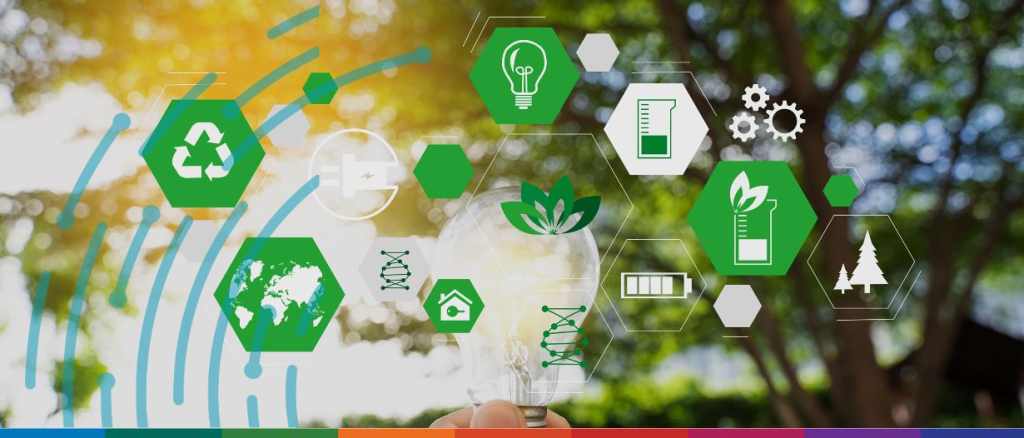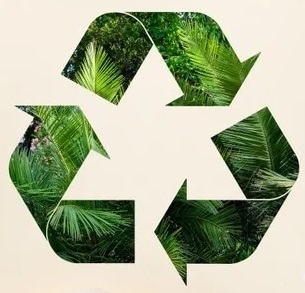In today’s interconnected global marketplace, how businesses obtain their materials and services has become nearly as important as the products they sell. Ethical sourcing has emerged as a critical business practice that extends beyond mere compliance to become a cornerstone of corporate identity and competitive advantage. This fundamental shift is reshaping supply chains across industries and redefining what success means for modern enterprises.
Understanding Ethical Sourcing
Ethical sourcing refers to the practice of ensuring that products and services are obtained in a responsible and sustainable manner that considers both environmental impacts and human rights. It encompasses multiple dimensions including fair labor practices, environmental sustainability, animal welfare, and transparent business operations.
At its core, ethical sourcing aims to create supply chains where every link—from raw material extraction to final production—adheres to standards that protect workers, communities, and ecosystems. This holistic approach requires businesses to look beyond immediate suppliers and understand the extended network of partners contributing to their products.

The Business Case for Ethical Sourcing
While ethical sourcing was once viewed primarily through a moral lens, today’s business leaders increasingly recognize its strategic importance:
Risk Management
Unethical practices anywhere in the supply chain represent significant business risks:
- Reputation damage from exposed labor abuses or environmental violations
- Legal liabilities from regulatory non-compliance
- Supply disruptions from community conflicts or resource depletion
- Financial penalties from governing bodies
Companies that implement robust ethical sourcing programs effectively create an insurance policy against these potentially devastating risks.
Consumer Demand and Brand Loyalty
Modern consumers increasingly base purchasing decisions on ethical considerations:
- 73% of global consumers say they would definitely or probably change consumption habits to reduce environmental impact
- 70% of consumers say they’re willing to pay a premium for products from companies committed to social and environmental impacts
- Millennials and Generation Z show particularly strong preferences for ethical brands
These shifting consumer priorities translate directly to market performance, with ethically-sourced products often enjoying price premiums and market share growth.
Talent Attraction and Retention
A company’s sourcing practices significantly impact its ability to attract and retain top talent:
- Employees increasingly want alignment between personal and company values
- Younger workers in particular seek employers with demonstrable ethical commitments
- Pride in company practices contributes to employee satisfaction and productivity
- Ethical controversies can trigger staff departures and recruitment challenges
Key Elements of Effective Ethical Sourcing
Organizations committed to ethical sourcing typically focus on several core elements:
Comprehensive Supplier Codes of Conduct
Effective ethical sourcing begins with clear expectations:
- Detailed standards covering labor practices, environmental management, and business ethics
- Requirements that extend beyond first-tier suppliers to include subcontractors
- Alignment with international standards like SA8000, ISO 14001, or industry-specific certifications
- Regular updates to address emerging issues and evolving best practices
Robust Verification Systems
Codes of conduct require verification through:
- Independent third-party audits and certifications
- Unannounced supplier inspections
- Worker voice mechanisms like anonymous hotlines
- Technology solutions including blockchain traceability and satellite monitoring
Supplier Development Programs
Leading companies view suppliers as partners in improvement:
- Training and capacity building for suppliers struggling to meet standards
- Technical assistance for implementing new processes
- Financial incentives for exceeding baseline requirements
- Collaborative problem-solving for complex challenges
Transparency and Communication
Ethical sourcing requires openness about both achievements and challenges:
- Public disclosure of supplier locations and audit results
- Regular sustainability reporting using standardized frameworks
- Clear communication about goals, progress, and obstacles
- Stakeholder engagement to gather feedback and identify priorities

Industry-Specific Ethical Sourcing Challenges
While certain ethical sourcing principles apply universally, different industries face unique challenges:
Food and Agriculture
The agricultural sector faces particular scrutiny regarding:
- Fair compensation for farmers, especially in developing economies
- Water usage and management practices
- Pesticide application and soil health
- Land rights and deforestation concerns
- Animal welfare in livestock production
Companies like Nestlé, Mars, and Unilever have developed comprehensive responsible sourcing programs focused specifically on agricultural supply chains.
Textiles and Apparel
The fashion industry contends with:
- Labor conditions in garment factories
- Chemical usage in dyeing and finishing processes
- Water-intensive production methods
- Microplastic pollution from synthetic fabrics
- Animal welfare in leather, wool, and other animal-derived materials
Organizations like the Fair Wear Foundation and certification programs like GOTS (Global Organic Textile Standard) provide frameworks for addressing these concerns.
Electronics and Technology
Technology companies must navigate:
- Conflict minerals sourcing, particularly for rare earth elements
- Working conditions in manufacturing facilities
- E-waste management and circular economy approaches
- Energy consumption and carbon emissions
- Chemical usage in component production
Industry initiatives like the Responsible Business Alliance (formerly the Electronic Industry Citizenship Coalition) have developed standards specifically for electronics supply chains.
Implementing Ethical Sourcing in Organizations
Organizations looking to strengthen ethical sourcing typically follow several implementation steps:
Supply Chain Mapping and Risk Assessment
The foundation of ethical sourcing is comprehensive visibility:
- Identifying all suppliers, including subcontractors beyond tier one
- Assessing social and environmental risks associated with specific materials and regions
- Prioritizing high-risk categories for immediate attention
- Establishing baseline performance metrics
Policy Development and Internal Alignment
Successful implementation requires organizational commitment:
- Creating clear policies with executive endorsement
- Integrating ethical considerations into purchasing decisions and supplier selection
- Training procurement teams on identifying and addressing ethical issues
- Aligning incentive structures to reward sustainable sourcing decisions
Collaborative Approach to Improvements
Ethical sourcing works best as a partnership:
- Engaging suppliers in goal-setting and solution development
- Participating in industry initiatives to address systemic challenges
- Working with NGOs and community organizations to understand local contexts
- Sharing best practices and technologies across supply networks
Overcoming Common Challenges
Organizations pursuing ethical sourcing frequently encounter several obstacles:
Cost Considerations
Many companies struggle with perceived cost increases:
- Short-term thinking that fails to account for risk reduction benefits
- Inability to quantify reputation and brand value improvements
- Difficulty passing incremental costs to consumers
- Pressure from investors focused on quarterly results
Leading organizations address these challenges by developing comprehensive business cases that capture both tangible and intangible benefits of ethical sourcing.
Complexity and Transparency Limitations
Supply chain complexity creates significant challenges:
- Multiple tiers of suppliers across numerous countries
- Limited visibility beyond direct suppliers
- Cultural and language barriers in supplier engagement
- Varying legal standards across jurisdictions
Technologies like blockchain and sophisticated supplier management systems are helping companies overcome these transparency barriers.
Measurement and Reporting Challenges
Quantifying ethical sourcing progress can be difficult:
- Determining appropriate metrics for diverse ethical dimensions
- Gathering consistent data across global operations
- Balancing standardized and customized approaches
- Communicating complex supply chain information to stakeholders
The Future of Ethical Sourcing
Several emerging trends will likely shape ethical sourcing practices in coming years:
Technology-Enabled Transparency
New technologies are transforming supply chain visibility:
- Blockchain applications for immutable supply chain records
- IoT sensors for real-time monitoring of conditions
- AI systems for risk prediction and pattern recognition
- Digital platforms connecting consumers directly with producers
Circular Economy Integration
Ethical sourcing is increasingly incorporating circular principles:
- Designing products for disassembly and material recovery
- Creating take-back programs to capture post-consumer materials
- Developing supplier partnerships focused on waste reduction
- Shifting business models from product sales to service provision
Regulatory Expansion
Government requirements around ethical sourcing are growing:
- Mandatory human rights due diligence legislation in multiple countries
- Extended producer responsibility laws
- Carbon border adjustment mechanisms
- Enhanced disclosure requirements for environmental and social impacts
Conclusion
Ethical sourcing has evolved from a niche concern to a business imperative. Organizations that approach it strategically gain multiple advantages: risk reduction, consumer loyalty, employee engagement, and resilience against disruption. Those that neglect these considerations increasingly find themselves at a competitive disadvantage.
As global challenges like climate change, resource scarcity, and social inequality intensify, ethical sourcing will only grow in importance. Forward-thinking businesses are seizing this opportunity to reimagine their supply chains as forces for positive impact—creating value not just for shareholders, but for the workers, communities, and ecosystems touched by their operations.
The most successful companies recognize that ethical sourcing isn’t simply about avoiding harm or mitigating risk; it’s about actively contributing to a more equitable and sustainable world through thoughtful business practices. In doing so, they secure their own future by helping ensure the health of the social and environmental systems on which all commerce ultimately depends.
FAQ: Ethical Sourcing
Q: How can small businesses implement ethical sourcing with limited resources?
A: Small businesses can start with manageable steps: focus on key materials or components, join industry groups to share resources, use existing certification programs rather than creating custom systems, and leverage their often closer supplier relationships to gain visibility. Many small businesses actually have advantages in ethical sourcing due to simpler supply chains and greater flexibility in decision-making.
Q: How do companies balance ethical sourcing with price competitiveness?
A: Leading companies approach this challenge strategically by: quantifying risk reduction benefits, communicating value to justify premium pricing where appropriate, focusing first on “win-win” improvements that reduce costs through efficiency, investing in long-term supplier relationships that create mutual benefits, and collaborating with industry peers on pre-competitive standards that level the playing field.

